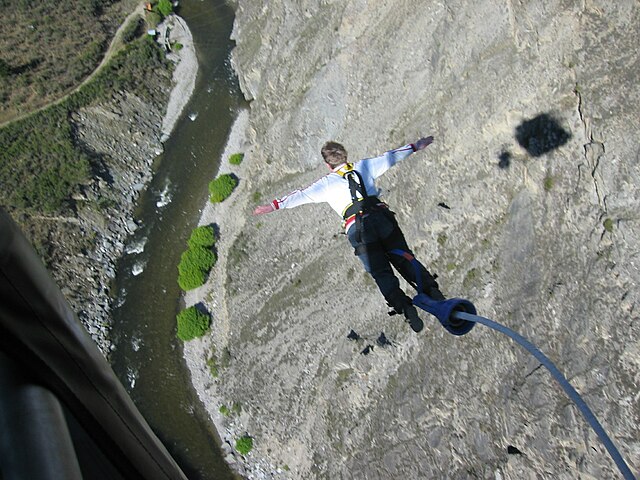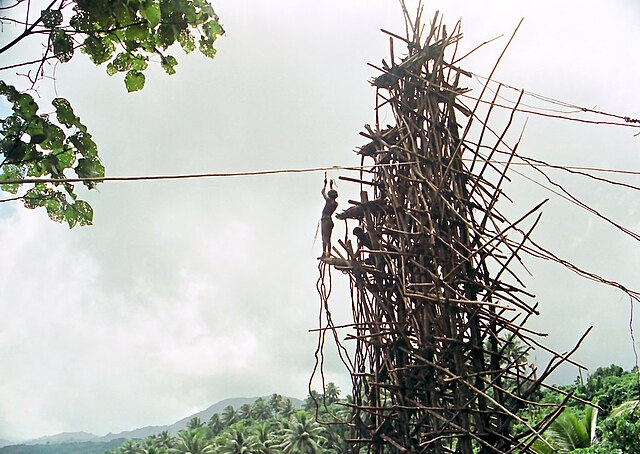Bungee jumping, also spelled bungy jumping, is an activity that involves a person jumping from a great height while connected to a large elastic cord. The launching pad is usually erected on a tall structure such as a building or crane, a bridge across a deep ravine, or on a natural geographic feature such as a cliff. It is also possible to jump from a type of aircraft that has the ability to hover above the ground, such as a hot-air-balloon or helicopter. The thrill comes from the free-falling and the rebound. When the person jumps, the cord stretches and the jumper flies upwards again as the cord recoils, and continues to oscillate up and down until all the kinetic energy is dissipated.
Bungee jumping off the Victoria Falls Bridge in Zambia/Zimbabwe
Land diving is a rite of passage for boys of the South Pacific island of Pentecost
Jump from Nevis Highwire Platform in New Zealand
Bungee Jump in Normandy, France (Souleuvre Viaduct)
Land diving is a ritual performed by the men of the southern part of Pentecost Island, Vanuatu. Men jump off wooden towers around 20 to 30 meters high, with two tree vines wrapped around the ankles. The tradition has developed into a tourist attraction. According to the Guinness World Records, the g-force experienced by those at their lowest point in the dive is the greatest experienced in the non-industrialized world by humans.
A diver preparing to jump. Except for the vines, land diving is performed without safety equipment.
Pentecost Islanders
Villagers soften the ground to help absorb the impact.
People below dance and sing chants, providing emotional support for the divers.








